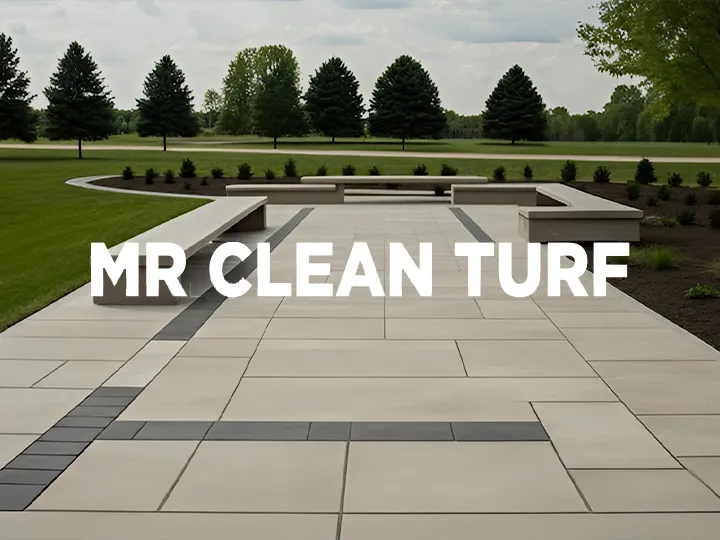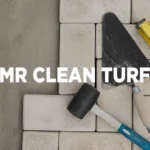Everything You Need to Know About Limestone Pavers in 2025
Limestone pavers are an excellent outdoor building choice for 2025 because they offer remarkable durability, stylish appearances, and environmentally friendly qualities. This comprehensive guide features modern industry patterns, material evaluation between limestone, brick, and concrete pavers, and an overall set of guidelines for optimal selection.
When used to create patios, driveways, and pools, limestone presents an enduring design that seamlessly integrates into all outdoor settings. In 2025, residents will prefer natural materials that present both aesthetic appeal and sustainability benefits, so limestone stands out as an ideal choice.
Limestone provides outdoor owners with an intelligent economic decision because it maintains its appearance under any weather condition while requiring minimal upkeep. The following section explains how limestone pavers become superior choices for upcoming projects.
Why choose limestone pavers in 2025?
The outdoor design scene of 2025 features limestone pavers, which remain popular because of their threefold advantages of structural, natural beauty, and environmental sustainability. Limestone pavers win over residential and professional landscape clients because of their sophisticated appearance and excellent longevity. The application of limestone pavers serves as a strong and adaptable solution for both backyard renovations and new outdoor residential development. Modern landscapes rely on limestone pavers because of several essential characteristics that make these stones their top pick.
Durability That Lasts Decades
The natural process that created limestone through time has made this stone into an extraordinary substance with remarkable durability. The durability of limestone pavers stands out among rubber pavers or cobblestone pavers because it does not break from freeze-thaw cycles while successfully withstanding dense foot traffic. This material has stood the test of time for more than half a century when properly maintained, so it serves as an outstanding material for patios and other areas. Limestone pavers maintain their structural strength under harsh weather exposure, which makes them an excellent outdoor material selection.
Timeless Design for Modern Landscapes
The multiple neutral color choices in limestone (from white to beige and gray) allow this material to match most design aesthetics, which makes it suitable for several different residential schemes. Limestone pavers appear most striking when combined with bluestone pavers or create a rustic atmosphere with flagstone pavers in landscape settings. The multiple finish options of limestone work well for contemporary and conventional exterior designs to create an elegant outdoor area that will remain stylish for future years. The various tones in limestone pavers enable users to achieve either modern contemporary or rustic natural aesthetic outcomes while maintaining unmatched visual appeal.
2025 Trends in Outdoor Pavers
Outside living spaces are developing through innovative trends during 2025 that merge natural elements with technological advancements alongside sustainable practices. People who own homes now seek design elements combining both outdoor and indoor rooms through materials that form natural visual transitions. Limestone pavers remain prominent in 2025 outdoor trends because they combine natural beauty with adaptable design possibilities. This section evaluates how the usage of limestone structures the pathway for future outdoor design practices.
Biophilic Design and Natural Textures
People who own homes desire outdoor areas that offer a natural connection. The organic character of limestone material blends perfectly with gardens and water elements while establishing an environmental unity. The combination of brushed or tumbling treatments on the surface increases both the stone’s natural texture and reduces hazards from slippery surfaces better than contemporary smooth concrete paving materials. The trend shows that people want to integrate outdoor beauty into their domestic living environments through their chosen materials.
Smart Technology Integration
The landscape design of 2025 will include a selection of limestone pavers featuring built-in sensing technology for lighting and drainage purposes, which will modernize exterior environments. Smart features integrate best into dry-lay installations since these allow effortless integration of technologies. The market shows an increasing preference for pavers produced from recycled materials because consumers want green and innovative options. Smart features implemented into pavers function to improve both performance and transform the outdoor environment.
Comparing Limestone to Other Paver Materials
Selecting outdoor pavers presents a complicated decision since numerous options exist in the market. The distinctive qualities of limestone pavers establish them as a top choice because they offer long-lasting performance, together with attractive looks and diverse applications. An analysis of limestone pavers versus choices in paver materials will assist you in forming a decision.
Attribute |
Limestone Pavers |
Concrete Pavers |
Bluestone Pavers |
Brick Pavers |
Flagstone Pavers |
Rubber Pavers |
| Cost (per square ft.) | 8–20 | 4–10 | 15–30 | 10–20 | 12–25 | 5–15 |
| Durability | Lasts 50+ years; resists cracking and weathering | Prone to cracking over time; less durable in extreme weather | Extremely hard and durable; withstands heavy loads | Durable but fades in sunlight; cracks under heavy weight | Durable but uneven surfaces can shift | Soft and cushioned; less durable for heavy use |
| Aesthetics | Neutral tones (creamy white, gray, beige); smooth or textured finishes
colors; lacks natural elegance |
Wide range of colors and patterns; can mimic natural stone | Rich blue-gray tones; natural, rugged look | Classic red or brown; old-world charm | Irregular shapes; natural, “wild” look | Limited colors; lacks natural elegance |
| Maintenance | Low maintenance; requires sealing | Requires regular sealing and repairs | Low maintenance; occasional sealing | High maintenance; prone to fading and moss growth | Moderate maintenance; uneven surfaces can collect debris | Low maintenance; easy to clean |
| Best Use Cases | Patios, driveways, pool decks, walkways | Driveways, walkways, and low-traffic areas | High-traffic areas, modern designs | Traditional walkways, garden paths | Rustic patios, garden paths | Play areas, gym floors, and kid-friendly zones |
How to Install Limestone Pavers Correctly
The proper setup of pavers creates conditions that keep them durable and functioning optimally. If you choose to do the project yourself or hire a professional, understanding the correct installation techniques will help you save both time and money. A complete guide with methods and mistake prevention information exists for correct limestone paver installation.
Dry-Lay vs. Wet-Lay Methods
Dry-lay installation provides both cost and environmental benefits because it requires either sand or gravel beneath which water can drain freely. DIY individuals can use this method successfully with both limestone pavers and cobbles while building patios and walkways.
The pavers can be secured in place through a wet-lay approach, which requires mortar application for enhanced durability. Professional installers must carry out the installation of this material due to its requirements, yet it delivers ideal outcomes for areas with heavy traffic, such as commercial buildings and driveways.
Common Installation Mistakes to Avoid
- Time will cause the structure to shift improperly because of skipping the foundation base layer. A solid foundation must always consist of either gravel or sand.
- Failure to apply sealant on limestone pavers will damage the stone because limestone is regularly absorbent. The application of a protective sealant defends the stone materials while making them appear fresh for numerous years.
The proper installation of your limestone pavers can be achieved through these recommended guidelines, which guarantee their durability.
Maintaining Your Limestone Pavers
Regular maintenance of pavers will help you preserve their aesthetics and operational life span of several decades. A few basic steps will shield your investment and maintain the attractiveness of your outdoor area. The proper treatments for limestone pavers begin with cleaning routines and proceed through the application of sealer and repair practices.
Cleaning Tips for Longevity
Solid stone cleaning comes from water mixed with pH-neutral soap, which protects the stone material from harm. Keep away from vinegar solutions along with acidic cleaning agents because they will damage the limestone surface. Using pressure washing with a gentle technique helps eliminate deep surface contamination yet protects the stone surface from damage.
Sealing and Repair Strategies
The application of protective sealants on limestone pavers should be done every 3–5 years to prevent both staining and weather damage. To address cracking damage, you need to fix the space using a limestone dust and resin mixture that will blend with the surface nicely. The lifetime of pavers as well as their appearance can be extended by regular sealing combined with prompt repair work.
Proper maintenance routines described here will help your limestone pavers remain durable while keeping their visual appeal throughout multiple years.
Sustainability and Cost of Limestone Pavers
Homeowners place equal importance on cost reduction and sustainability as they decide on their outdoor development plans in 2025. The use of pavers delivers both sustainable advantages and enduring worth, thus making them suitable for contemporary landscape applications. Limestone possesses environmental sustainability characteristics while maintaining reasonable budget costs.
Eco-Friendly Benefits in 2025
Limestone pavers maintain lower carbon emissions in the production process because their extraction and processing require minimal energy compared to synthetic products. Limestone pavers qualify as 100% recyclable material, while rubber pavers make for end products that usually contribute to landfill waste. Limestone presents homeowners with a sustainable building material that suits their desire to protect the environment.
Budgeting for Your Project
Installation costs for limestone pavers will be between $15 and $30 per square foot when incorporating the price of materials and workmanship. The initial cost of concrete pavers exceeds concrete pavers, but limestone provides long-term financial advantages because it requires minimal repairs and remains durable for extended periods. People who select limestone get an elegant outdoor area that will serve them without maintenance for many years.
Your investment in limestone creates both practical and sustainable advantages for your home and monetary savings for your financial resources.
Final Thoughts!
The landscaping requirements of 2025 require limestone pavers because they blend an elegant appearance with robust composition while being environmentally friendly. People can use limestone pavers for patios or walkway structures because they work well with various requirements. Limestone pavers provide exemplary outdoor project solutions because they have lasting design and durability, together with minimal care requirements.
Limestone pavers have become more adaptable due to their implementation of biophilic design and smart technology standards. The material stands out because it meets the rising environmental concerns of the construction industry about using sustainable materials. People seeking a material that matches both their design goals and functional needs and environmental values should choose limestone pavers.
Contact Mr. Clean Turf to get expert assistance selecting limestone pavers that will leverage their potential for your project.



